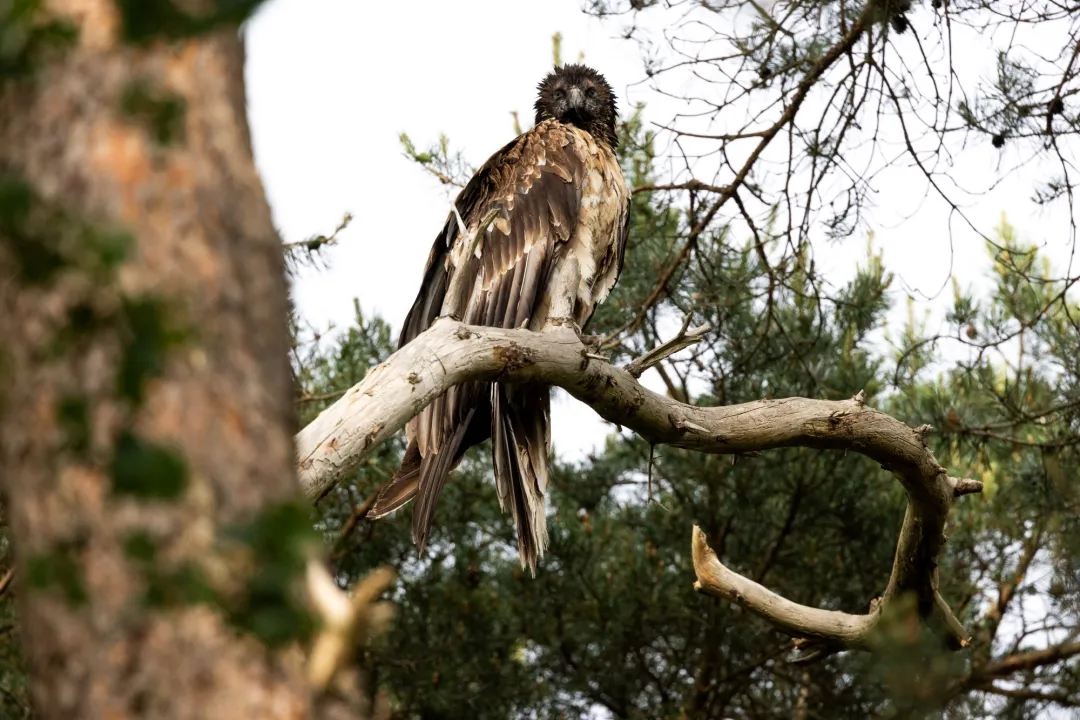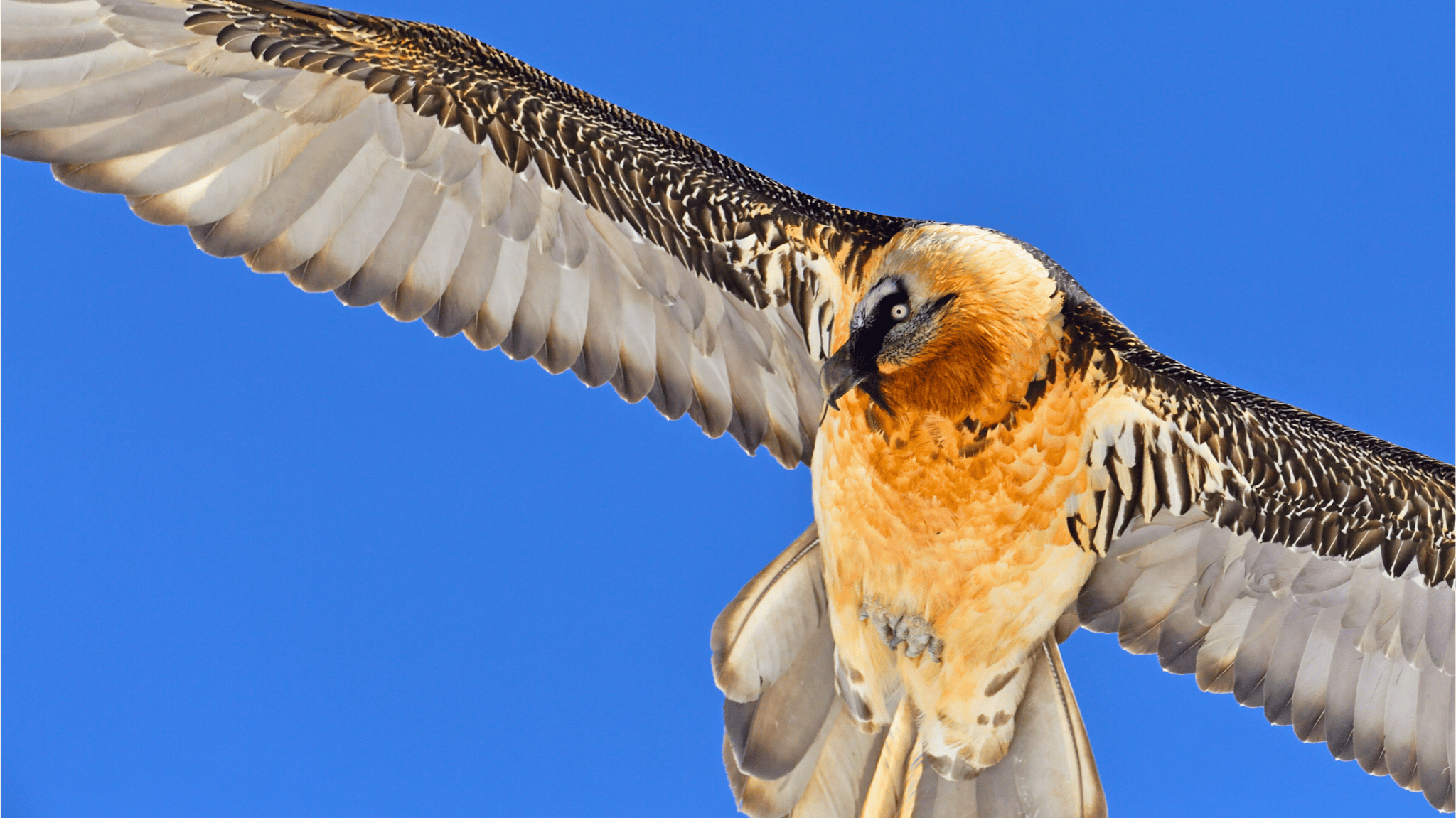The release of captive-bred Bearded Vultures into the wild in Baronnies, France, marked a great start to an eventful period ahead, aimed at reintroducing and restocking wild populations of the species.

Each year the Bearded Vulture Captive Breeding Network, led by the Vulture Conservation Foundation (VCF), collaborates with various partners to breed Bearded Vultures in captivity for conservation purposes
As a result of another successful cooperation between several partners, two Bearded Vultures, “Oeil rouge” (Red Eye) from the Richard Faust Bartgeier-Zuchtzentrum (RFZ) breeding center in Austria and “Merivilha” (Wonder) from Ostrava Zoo in the Czech Republic, were released into the wild in the Baronnies, France in early May 2024.
Breeding Bearded Vultures for conservation
The Vulture Conservation Foundation collaborates with 40+ European institutions to manage the Bearded Vulture captive breeding network, part of EAZA’s European Endangered Species Programme (Bearded Vulture EEP).
For decades, we have been releasing captive-bred Bearded Vultures across Europe to restore local populations in areas where the species became extinct or are under threat. VCF oversees global captive Bearded Vulture efforts, ensuring coordination and adherence to EEP guidelines. As coordinators of the Bearded Vulture Captive Breeding Network, we optimize breeding outcomes and maintain conservation efforts across Europe.
This release was done as a part of the LIFE Gyp’Act conservation project, which aims to consolidate the Bearded Vulture population in South-eastern France, ensuring the connection between the Pyrenean and Alpine populations.
Preparing for the release
Before the Bearded Vultures “Red Eye” and “Wonder” travelled from the RFZ Breeding Centre in Austria to the release site in France, they were equipped with identification rings and a unique set of their feathers was bleached to facilitate monitoring their movements and progress in the wild. The chicks were transported to Nice, France, on 3 May 2024.

In Nice, our partners from Vautours en Baronnies welcomed the vultures and transported them to the release site in Léoux. The team checked the markings and identification rings, fitted them with GPS, and took them directly to the release cave.
Releasing and protecting the Bearded Vultures in Southern France
The vultures were released into the wild using a method that mimics their natural fledging process. They were placed in a cave with artificial nests that resemble the wild nests of the species.



Following the release, the vultures are fed and monitored from a distance to protect them against any threats. In this case, for example, the team had to return to the site the day after the release because monitoring showed that a fox had entered the cave. This was of course concerning but luckily nothing bad happened – the fox had taken all the food but didn’t harm the birds.
But that was not the only trouble that these rebellious little chicks got themselves into. Just seven days after its release at the age of 107 days, “Red Eye” already took its first flight.
The flight was unexpectedly early, as they are typically expected to adapt to their natural surroundings for 20-30 days post-release, before taking their first flight.
Intervening to save the young, inexperienced vulture
The combination of the very early flight and the expected stormy weather alarmed the monitoring team, prompting them to pay extra attention to the bird, especially regarding food access. At this age, birds typically do not use roosting places protected from bad weather, creating a risk that they might get wet and be unable to fly to the feeding sites. Therefore, the team intensified monitoring to check on the bird’s status, so if its feathers became wet, they would place food in the surrounding area, accessible on foot, until the situation stabilized.
However, with rain and storms forecasted for the next ten days, the situation remained precarious. Even with occasional sunny moments, it would likely be difficult for the bird to continue flying and feeding serenely. When the team placed food near the bird due to the weather, the observations revealed that foxes, ravens, and Griffon Vultures quickly consumed most of the food soon after daylight broke, leaving little for it to eat.
Given these challenges, the LIFE Gyp’Act team decided to intervene by placing more food the next day, and if possible, they would also attempt to catch the bird. When they arrived, the bird made a short flight of 2-3 meters and landed in some bushes. Taking advantage of this opportunity, the team promptly transported it back to the hacking site and provided ample food, where it ate a lot, ensuring its survival.
The monitoring team will continue to closely watch the chicks and is dedicated to minimizing potential risks, ready to intervene quickly until the young vultures are more capable of taking care of themselves.
Within the LIFE Gyp’Act project, this was the beginning of many other releases that will be happening throughout the next few months – we hope the released birds will live for a long time and settle in the region over the coming years!
LIFE Gyp’Act

LIFE Gyp’Act is a 13M€ project, co-funded by the EU’s LIFE programme, that will run until 30 November 2028. Project partners are LPO – Ligue pour la Protection des Oiseaux as coordinator beneficiary, and the Vulture Conservation Foundation, Association Vautours en Baronnies, LPO Auvergne-Rhone-Alpes, LPO Occitanie, Sorbonne Université, ENEDIS, Centre National d’Informations Toxicologiques Vétérinaires, Parc National des Cévennes and Parc Naturel Régional du Vercors as associated beneficiaries.




